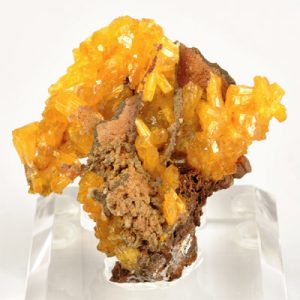Legrandite
Legrandite is a zinc that is rare mineral, Zn2(AsO4)(OH)·(H2O). It really is an uncommon mineral that is secondary the oxidized zone of arsenic bearing zinc deposits and occurs rarely in granite pegmatite. Associated minerals include: adamite, paradamite, köttigite, scorodite, smithsonite, leiteite, renierite, pharmacosiderite, aurichalcite, siderite, pyrite and goethite. It was reported from Tsumeb, Namibia; the Ojuela mine in Durango, Mexico as well as Sterling Hill, New Jersey, US. It absolutely was first described in 1934 for an occurrence when you look at the Flor de Peña Mine, Nuevo León, Mexico and named after M. Legrand, a mining engineer that is belgian . Legrandite is a really rare mineral that is phosphate is found in colors of yellow and is rarely faceted because so many specimens are kept by mineral collectors. The very few gems found are extremely small and included but are particularly breathtaking because of the bright color that is yellow. The two most memorable occurances of Legrandite are from Mexico at the Ojuela mine, Mapimí, Durango, and the Flor de Peña Mine, Lampazos de Naranjo, Nuevo Leon. Those two locations produce the finest crystals in the entire world. Other areas which can be minor Boa Vista, near Galiléia, Minas Gerais, Brazil; Ogibira mine, near Osa, Okayama Prefecture, Japan; Tsumeb, Namibia; Sterling Hill, Ogdensburg, Sussex County, New Jersey,USA.
| Category: | Arsenate minerals |
| Formula | Zn2(AsO4)(OH)·(H2O) |
| Crystallography: | Monoclinic – Prismatic |
| Crystal Habit: | As prismatic crystals, elongated, to 28 cm, striated; typically in sprays or sheaflike aggregates. |
| Twinning: | None |
| Cleavage: | [100] Fair to Poor, Imperfect |
| Fracture: | Uneven |
| Tenacity: | Brittle |
| Hardness (Mohs): | 4.5 |
| Density: | 3.98 – 4.01 (g/cm3) |
| Luminescence: | None |
| Radioactivity: | Not Radioactive |
| Color: | Colorless, pale to bright Yellow, Yellowish Orange |
| Transparency: | Transparent to Translucent |
| Luster: | Vitreous |
| Refractive Index: | 1.675 – 1.740 Biaxial ( + ) |
| Birefringence: | 0.0600 |
| Dispersion: | Distinct; r < v |
| Pleochroism: | X = Y = colorless to yellow; Z = yellow |


